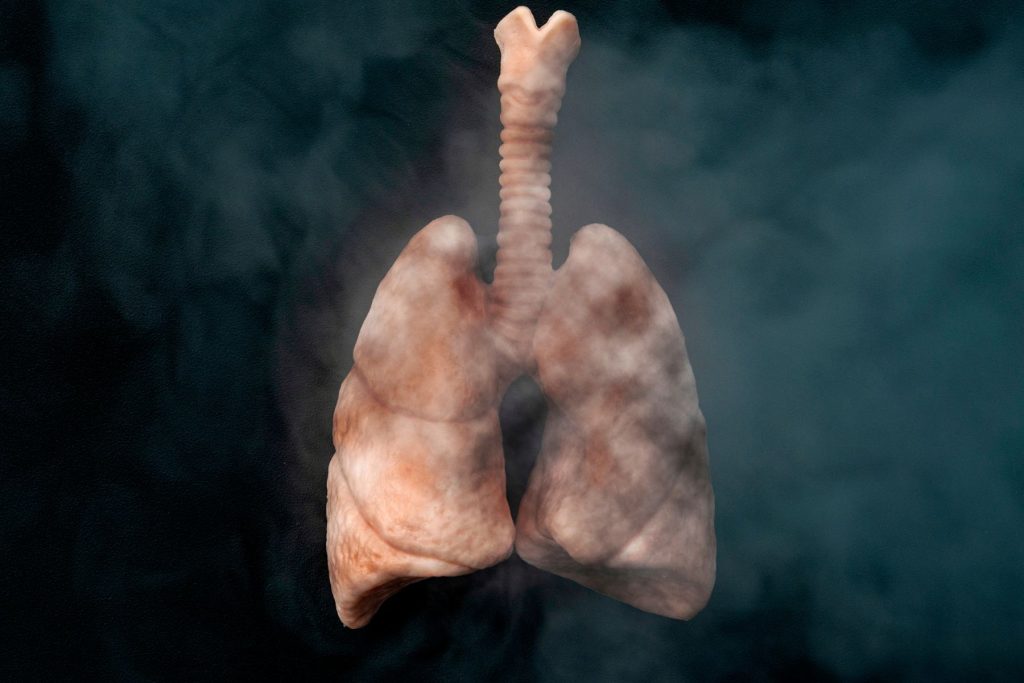Vaping is the term used for inhaling the aerosol of e-cigarettes or other similar devices, such as vape pens. Though they were originally promoted as a harm-reduction method of quitting smoking, it became quickly apparent that vape companies were targeting youth with their products, as they developed fruit- and candy-flavored vapes, and designed packaging that was intended to keep vapes hidden from parents and school personnel. Their odor, if they have one at all, is hard to detect. As a result, vapes quickly became a popular form of nicotine delivery, especially among teenagers and young adults.
E-cigarettes and vaping devices work by heating up a liquid that contains nicotine, which creates a chemical- and metal-laden aerosol that the user breathes in. While vape companies will claim it is less harmful than regular smoking, the long-term effects of vaping are still undetermined. Let’s look at some of the reasons why vaping is just not worth the risk to your health:

Electronic cigarettes are just as addictive as traditional ones.
Both e-cigarettes and regular cigarettes contain nicotine, which research suggests may be as addictive as heroin and cocaine. Some vape pods contain as much nicotine as an entire pack of cigarettes, and recently, a type of e-cigarette was found to have as much nicotine as five packs of cigarettes. This is done deliberately by the vape companies–the more nicotine they can deliver, the faster a person becomes addicted.
Research suggests vaping is bad for your heart and lungs.
Nicotine is a toxic substance. It raises your blood pressure and spikes your adrenaline, which increases your heart rate. It can also lower blood vessel tone, increasing the risk of narrow blood vessels. This all translates to an increased likelihood of having a heart attack.
Vapes can contain up to 2,000 chemicals and metals, none of which are good for your lungs. They include chemicals such as formaldehyde, which is toxic, and acrolein, which is an herbicide. Many of the chemicals used are safe in other commercial products, but become dangerous to our bodies when they are heated up and inhaled in an aerosol.
In 2019, there was an outbreak of lung injuries and deaths associated with vaping. As of Jan. 21, 2020, the Centers for Disease Control and Prevention (CDC) confirmed 60 deaths in patients with e-cigarette, or vaping, product use associated lung injury (EVALI). The CDC identified vitamin E acetate as a chemical of concern among people with EVALI–the word “vitamin” does not make it safe to inhale. In this case, vitamin E acetate is a thickening agent often used in THC vaping products, and it was found in all lung fluid samples of EVALI patients examined by the CDC; therefore, the conclusion was that this particular instance of lung disease was related to people vaping THC.
EVALI is not the only lung disease to be concerned about, however. Vaping also increases the risk of lung diseases such as emphysema, asthma, chronic bronchitis, and chronic obstructive pulmonary disease (COPD).

E-cigarettes aren’t the best tool to help you quit smoking.
Because vapes contain fewer chemicals than regular tobacco products (2,000 vs 7,000), vape companies love to promote them as a “safer” alternative to smoking, and as a way to quit smoking. However, the higher nicotine content does nothing to relieve the addiction, and can in fact make it worse. Therefore, while vaping may help you stop smoking, you might simply be trading smoking for vaping, which may still have negative long-term health risks. At least one study found that most people who intended to use e-cigarettes to kick the nicotine habit actually continued to smoke both traditional and e-cigarettes.
It is also worth noting that e-cigarettes have not received Food and Drug Administration approval as smoking cessation devices. If you are looking for assistance to quit smoking, we recommend you look into other FDA-approved smoking cessation options.
Vape companies are going after our children.
Among youth, e-cigarettes are more popular than any traditional tobacco product. As of June 2023, there were 5,800 different disposable e-cigarettes being sold in U.S. stores. That number is up more than 1,500% from 356 disposables available in early 2020. That type of increase doesn’t happen from selling products to people who want to quit smoking. It comes from an effort to market and sell to our children. And it’s working. The CDC reports that disposable e-cigarette use has increased 1,000% among high school students and 400% among middle school students since 2019.
Why are our teens attracted to vaping? The idea that vaping is less harmful than smoking is appealing to them. E-cigarettes have a lower per-use cost than traditional cigarettes. As mentioned earlier, vape cartridges are often formulated with flavorings such as apple pie and watermelon that appeal to younger users, and designed to look like USBs or even toys, to make them easy to conceal from adults. Both youths and adults find the lack of smoke appealing. With no smell, e-cigarettes reduce the stigma of smoking.
Another factor can be parents themselves. At a loss to understand the world their children are now navigating–social media, the war over “wokeness,” constant bombardment of world news, cancel culture, etc.–some parents encourage vaping, or at least turn a blind eye to it. This encourages their children to partake.
All of this leads to one of the biggest concerns among doctors about the rise of vaping: youth are taking up the habit, which often leads to using traditional tobacco products down the road. Sadly, most users don’t realize that no matter the method, nicotine is still very addictive and can have dangerous effects on their health.
Find more resources about vaping at:
hopkinsmedicine.org (Michael Blaha, M.D., M.P.H., the director of clinical research at the Johns Hopkins Ciccarone Center for the Prevention of Heart Disease)

